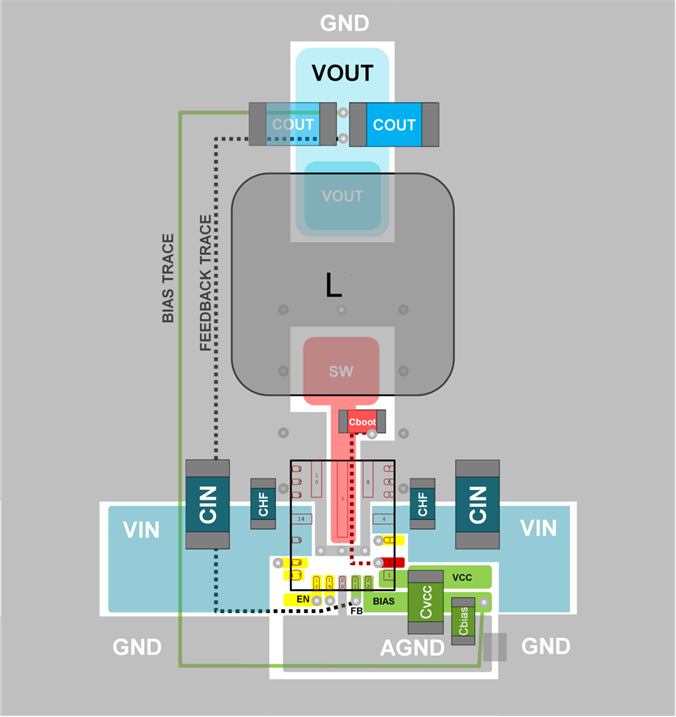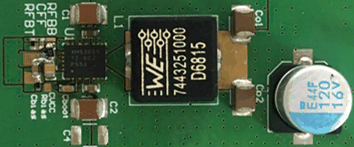ZHCSGT2C November 2016 – August 2021 LMS3635-Q1 , LMS3655-Q1
PRODUCTION DATA
- 1 特性
- 2 应用
- 3 说明
- 4 Revision History
- 5 Device Comparison Tables
- 6 Pin Configuration and Functions
- 7 Specifications
- 8 Detailed Description
-
9 Application and Implementation
- 9.1 Application Information
- 9.2
Typical Applications
- 9.2.1
General Application
- 9.2.1.1 Design Requirements
- 9.2.1.2 Detailed Design Procedure
- 9.2.1.3 Application Curves
- 9.2.2 Fixed 5-V Output for USB-Type Applications
- 9.2.3 Fixed 3.3-V Output
- 9.2.4 6-V Adjustable Output
- 9.2.1
General Application
- 9.3 Do's and Don't's
- 10Power Supply Recommendations
- 11Layout
- 12Device and Documentation Support
- 13Mechanical, Packaging, and Orderable Information
11.2 Layout Example
This example layout is the one used in the LMS36x5-Q1 EVM. It shows the CIN and CIN_HF capacitors placed symmetrically on either side of the device.
 Figure 11-2 Recommended Layout for LMS36x5-Q1
Figure 11-2 Recommended Layout for LMS36x5-Q1The evaluation module solution size is 17.8 mm by 43.2 mm. This is a typical of an automotive layout, as pictured in Figure 11-3.
 Figure 11-3 LMS3655MQEVM Layout
Figure 11-3 LMS3655MQEVM Layout